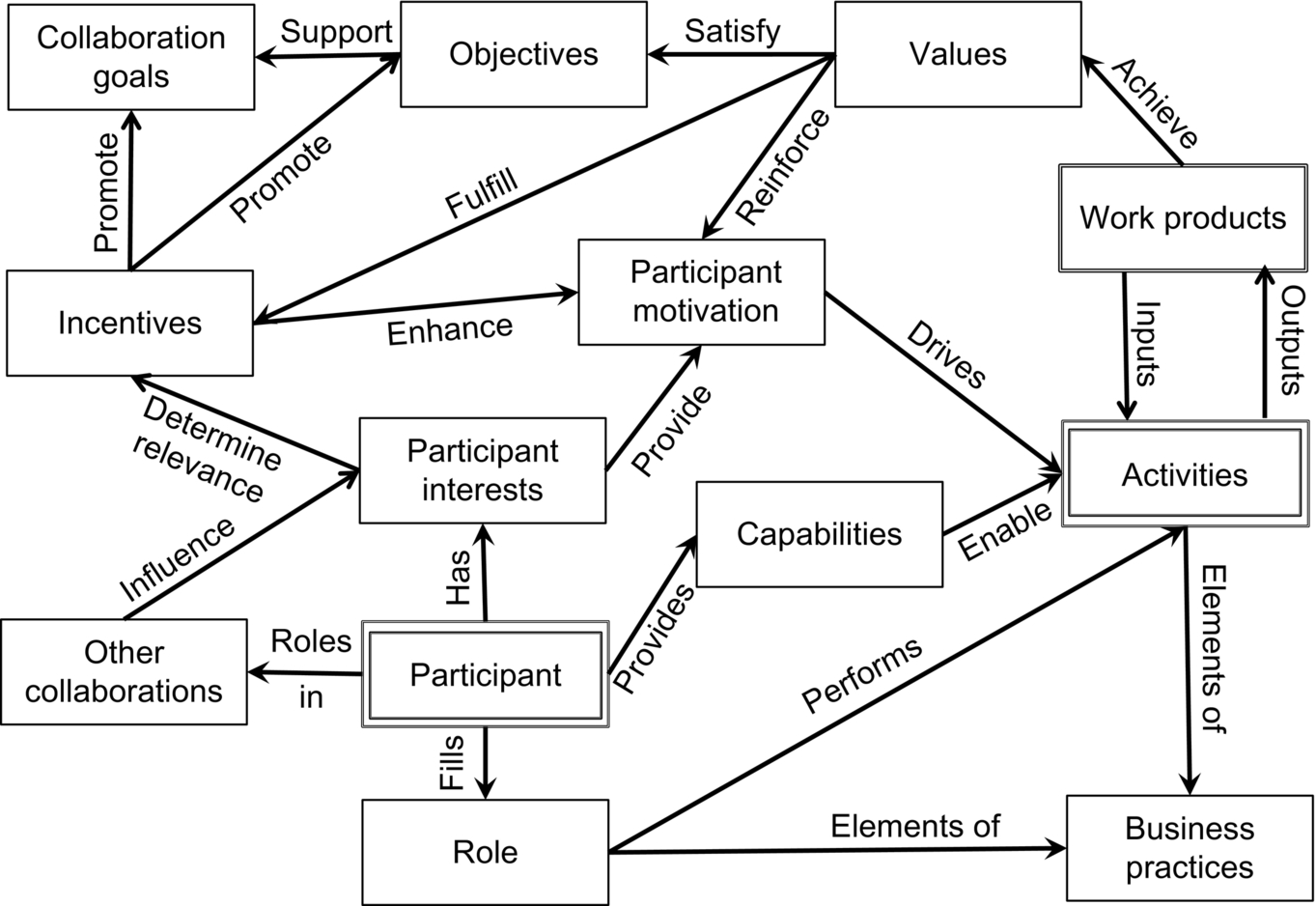A Conceptual Model of Business Culture
Culture is a collection of intangible, informal forces, and ideas that influence how and why people collaborate for a shared purpose. It includes the interests, beliefs, experiences, and patterns of work that extend beyond any formally defined roles and responsibilities of the participants.
The challenge is that culture is complex because it involves individual values, personal relationships, and personal motivation. Fig. B.1 is a preliminary concept diagram for culture.

When employees are expected to function as automatons, following prescribed processes, their personal interests and individual values and experiences are not only irrelevant but may be a distraction.
However, today’s workforce consists increasingly of knowledge workers, and the quality and efficiency of their work depends on their individual capabilities, their attitudes about the nature and quality of their work, and how they collaborate with others. Culture is important.
The two key elements of this diagram are the participant and activities. The participant fills a role in which he/she performs activities. The role and the activities are elements of a business practice. The participant provides capabilities that enable the activities. The participant interests determine the relevance of incentives that enhance motivation that drives the participant’s activities. The activities consume and produce work products with values that potentially reinforce the participant’s motivation, fulfill the purpose of incentives, and satisfy business objectives. The objectives support the goal(s) of the collaboration in which the participant is working with others for a shared purpose. The incentives must also promote the goals of the collaboration. The participant may have roles in other collaborations that may influence the participant’s interests. The strength and consistency of these relationships will influence the performance of the participant, along with collaborations (including personal relationships) with other participants and with other persons both inside and outside the enterprise.
This diagram is a starting point for discussion. It addresses only the motivation of one person in a complex network of relationships and collaborations with others. If nothing else, a model might help a manager focus on opportunities to improve the harmony and motivation of employees to enhance their productivity, initiative, and job satisfaction.
